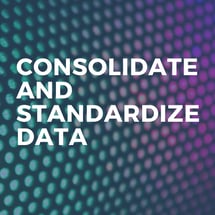Top 10 Family Office Reporting Practices: Efficiency and Transparency
Family offices play a crucial role in managing the wealth and assets of high-net-worth families. To ensure effective decision-making and maintain strong relationships with family members and stakeholders, clear and comprehensive reporting practices are vital.
Effective reporting can help families make informed investment decisions, identify risks, and track their overall financial performance. However, creating and maintaining effective reporting can be a challenge. There are a number of factors to consider, such as the family's specific needs, the complexity of their assets, and the latest reporting technologies. So read on for a list of the family office reporting best practices that will unlock efficiency and transparency.
.jpg?width=215&height=215&name=Untitled%20design%20(47).jpg)
Define Clear Reporting Objectives:
Establishing clear reporting objectives is the first step towards effective reporting. Understand the information needs of family members, trustees, and other stakeholders. Identify key performance indicators (KPIs) and establish reporting frameworks that align with your family's goals, values, and priorities.

Consolidate and Standardize Data:
Streamlining data collection processes is essential for accurate reporting. Implement systems that consolidate financial, operational, and investment data from multiple sources into a centralized reporting platform. Standardize data formats and definitions to ensure consistency and comparability across reports.
.jpg?width=215&height=215&name=Consolidate%20and%20Standardize%20Data%20(1).jpg)
Tailor Reports to Audience Needs:
Different stakeholders have varying levels of financial expertise and information requirements. Customize reports to cater to the specific needs of each audience. Provide high-level summaries for family members and more detailed reports for investment advisors or trustees. Tailoring reports increases their relevance and readability.
.jpg?width=215&height=215&name=Consolidate%20and%20Standardize%20Data%20(2).jpg)
Implement Robust Technology Solutions:
Leverage technology to automate reporting processes and minimize manual errors. Invest in integrated reporting software that can generate customizable reports, automate data collection, and facilitate data visualization. Such tools can save time, improve accuracy, and enhance the overall reporting experience.
.jpg?width=215&height=215&name=Consolidate%20and%20Standardize%20Data%20(3).jpg) Emphasize Data Visualization:
Emphasize Data Visualization:
Visual representations of data can simplify complex information and enhance comprehension. Incorporate charts, graphs, and other visual elements into your reports to make them more engaging and user-friendly. Visualizations can help identify trends, patterns, and outliers more effectively, enabling better decision-making.
.jpg?width=215&height=215&name=Consolidate%20and%20Standardize%20Data%20(4).jpg)
Establish Reporting Timelines:
Adhere to consistent reporting schedules to ensure timely delivery of information. Clearly communicate reporting deadlines to all relevant parties, including internal teams, family members, and external advisors. Regular and predictable reporting instils trust and maintains accountability within the family office.
.jpg?width=215&height=215&name=Consolidate%20and%20Standardize%20Data%20(5).jpg) Provide Context and Analysis:
Provide Context and Analysis:
Beyond presenting raw data, add value to your reports by providing contextual analysis. Interpret key findings, discuss market trends, and highlight significant events that may impact the family's investments or financial position. By offering insightful commentary, reports become more meaningful and actionable.
.jpg?width=215&height=215&name=Consolidate%20and%20Standardize%20Data%20(6).jpg)
Enhance Cybersecurity Measures:
Family offices handle sensitive financial information, making cybersecurity a top priority. Protect data integrity and confidentiality by implementing robust cybersecurity measures. Encrypt data, enforce access controls and conduct regular security audits to safeguard against potential threats.
.jpg?width=215&height=215&name=Consolidate%20and%20Standardize%20Data%20(7).jpg)
Foster Two-Way Communication:
Reporting should be a two-way street. Encourage feedback and questions from family members and stakeholders to address concerns and ensure their needs are being met. Actively engage in dialogue to foster transparency, build trust, and demonstrate your commitment to their financial well-being.
.jpg?width=215&height=215&name=Consolidate%20and%20Standardize%20Data%20(8).jpg)
Continuously Improve and Evolve:
Family office reporting should be a dynamic process that evolves alongside changing needs and market conditions. Regularly evaluate the effectiveness of your reporting practices and identify areas for improvement. Embrace feedback and leverage new technologies and industry best practices to enhance reporting efficiency and effectiveness.
Effective reporting practices are the cornerstone of a successful family office, enabling efficient decision-making, transparency, and trust among stakeholders. By implementing these top 10 family office reporting best practices, you can enhance efficiency, streamline operations, and strengthen the relationships with your family members, trustees, and advisors. Stay proactive, adapt to evolving needs, and continuously strive for improvement in your reporting processes to maximize the value your family office delivers.
For a no-commitment demonstration of how Elysys family office software can help unlock your efficiency, contact us.